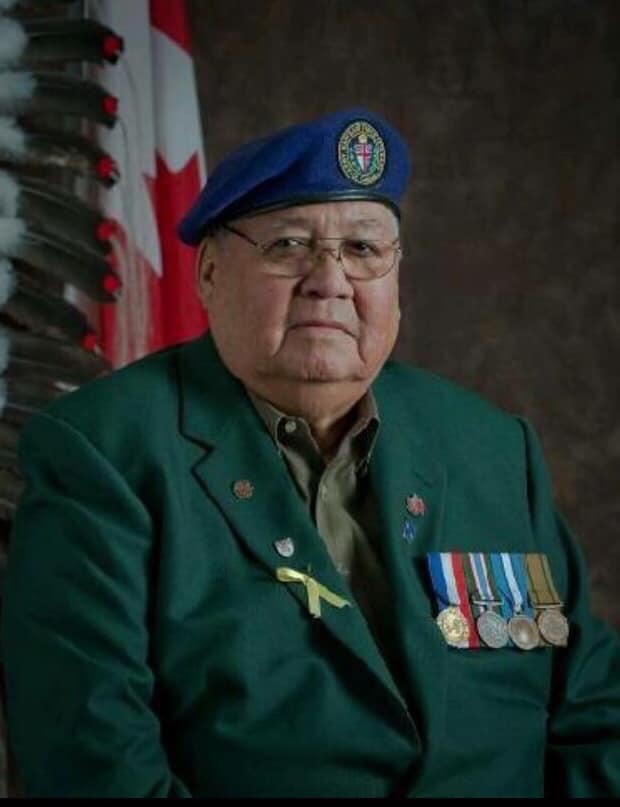Remembering a distinguished First Nations veteran
- NC Raine | January 25, 2019
Distinguished Indigenous Veteran Raymond Sanderson passed away early in January, at the age of 76.
Sanderson, of James Smith Cree Nation, served two tours of duty in Germany with the Canadian Army. In the first tour, in 1961, at the age of 19, Sanderson joined the regiment called “The Black Watch of Canada”, being honourably released in 1964. He re-enlisted later that year, returning to Germany with the Princess Patricia Canadian Light Infantry (PPCLI). After five years with the PPCLI, Sanderson was honourably released in 1971, earning a total of six medals of distinction during his service.
“He was a very friendly, approachable person,” Saskatchewan First Nations Veterans’ Association (SFNVA) Grand Chief Steven Ross told Eagle Feather News. “(Sanderson), like all soldiers, are proud of what they do for their country and their unit.”
Sanderson was also vocal about his experiences in residential schools, where he spent 12 years as a child. He spoke with Eagle Feather News in 2015 on the suffering he experienced in residential school.
“I remember the loneliness, being lonesome for home. I suffered like this all of my life, and even while in the army, I was lonesome and couldn’t ever figure it out,” he said.
Sanderson enlisted in the armed forces shortly after his time in residential school. In interviews, Sanderson talked about how the army taught him discipline and respect for others.
As a fellow peacekeeper, Ross relays how serious of a commitment veterans like Sanderson made to their country.
“It’s important because most (men like Sanderson) put their lives on the line. In the event there was war, they’d be the first ones deported. But at the same time, they’re servicing peacekeeping all over the world. Sometimes it’s not peaceful. People get shot at during peacekeeping tours. So, it’s not a safe environment,” said Ross.
Sanderson later became SFNVA Grand Chief, known as a tireless advocate for First Nations veterans’ rights. He fought for equality for Indigenous veterans, who were not given the same money, land, and other benefits as their non-Indigenous counterparts.
He also worked on a Grave Marker program, helping to place and restore headstones of fallen First Nations soldiers.
“He worked hard for the Veterans Association. He was a statesman – that’s what he was. He spoke highly of the veterans and worked to get them a lot of benefits,” said Ross.
Sanderson died of cancer on January 6, 2019.

